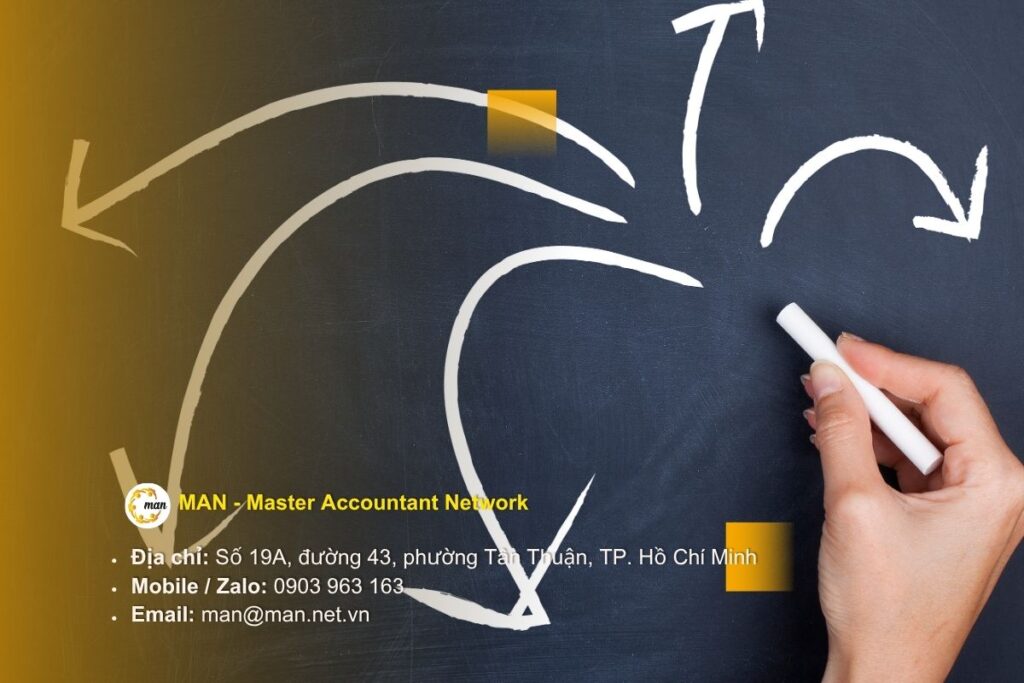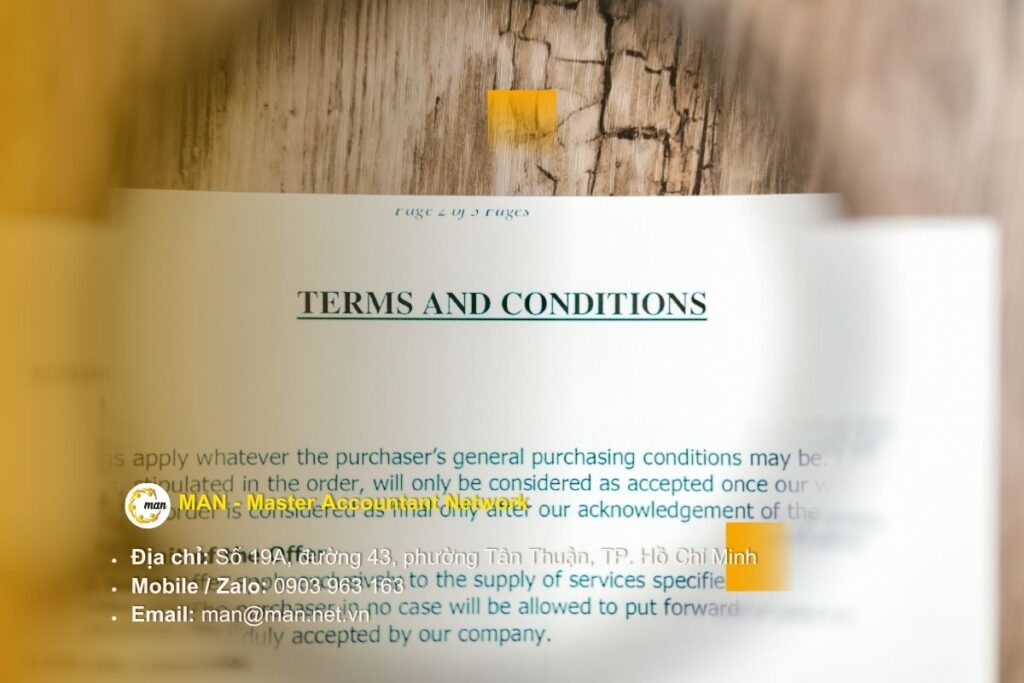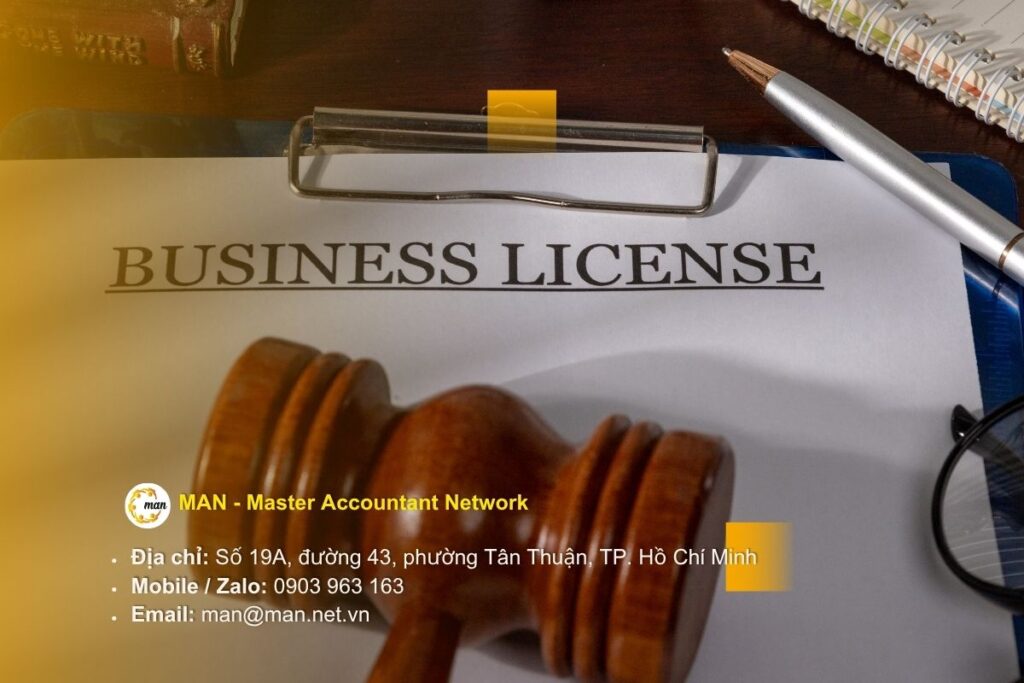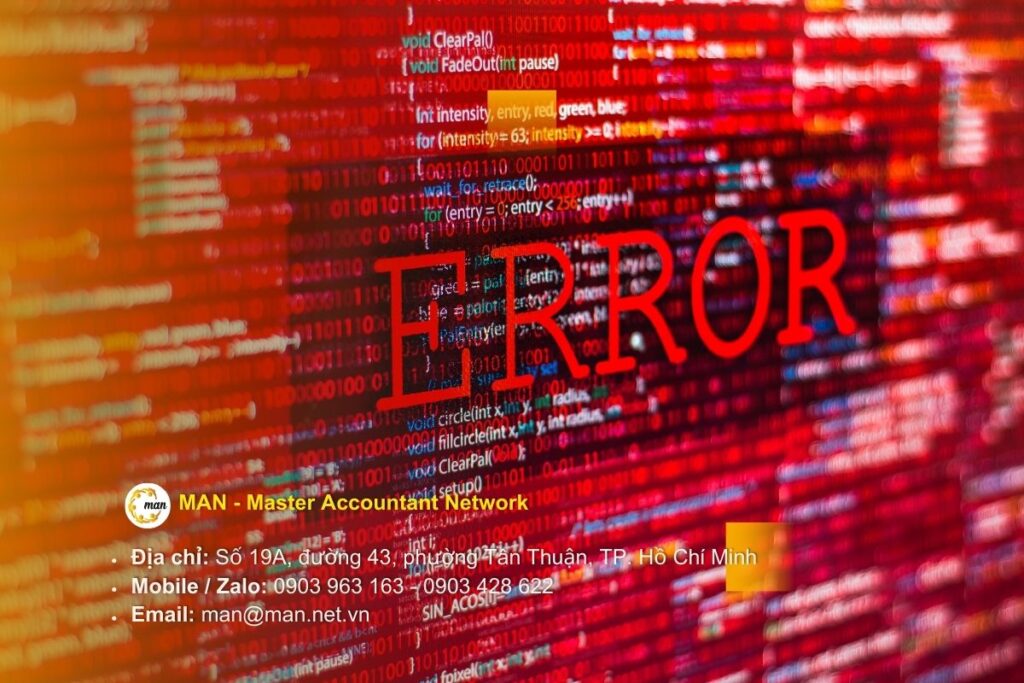Mistakes in related-party transactions not only put businesses at risk of being charged tens of billions of dong, but also directly affect their reputation and financial transparency. From determining related-party relationships, applying the principle of independent market prices, to filing declarations. Just one substandard step can lead to serious legal risks. This article will analyze the most common mistakes, their consequences, and solutions to help businesses avoid them effectively, based on current legal basis and practical experience.
Why are related-party transactions prone to errors?
Error affiliate transactions Related party transactions arise frequently because the nature of transactions between related parties is complex, diverse and easily influenced by internal management objectives rather than just the market. Some of the main reasons are as follows:
- Ambiguous definition and boundaries: Related party relationships can appear in many forms (direct or indirect ownership, control, management contracts, technical support, etc.), so it is difficult for businesses to determine which parties should be considered related, leading to errors in related party transactions.
- Transaction specificity and lack of benchmarking: Many transactions involve internal services, intangible assets, or shared cost allocations. These are difficult to compare and contrast in the independent market, leading to inappropriate comparison methods. This leads to transfer pricing errors.
- Complexity of Transfer Pricing (TP) methods: Comparative methods (CUP, RPM, TNMM,…) require data and analytical skills; choosing the wrong method or processing data incorrectly will create large errors. Choosing the right method, analyzing and processing data is extremely important to avoid errors in related-party transactions.
- Incomplete supporting documents: Enterprises lack a complete set of transfer pricing documents, do not have enough economic evidence or comparative data at the time of the transaction. This is one of the common causes of related party transaction errors, making it difficult for enterprises to prove transactions according to the arm's-length principle when tax authorities inspect.
- Internal processes and ERP systems are not synchronized: Inconsistencies in data management between departments and unstandardized ERP systems are often the main causes of cross-functional transaction errors, from incorrect data entry to inaccurate cost allocation.
- Human factors and business motivation: Due to limitations in human resources capacity and business pressure, many "flexible" decisions in internal price construction pose risks of related-party transaction errors, directly affecting transparency and tax compliance.
These factors combine to make related-party transaction errors both easy to occur and difficult to detect if businesses do not have strict control processes and records.
The importance of identifying related-party transaction errors to prevent risks
Timely identification of related party transaction errors is not only a matter of compliance with the law (e.g. Decree 132/2020/ND-CP and related guiding documents on transfer pricing), but also a strategic risk management measure with practical benefits:
- Reduce direct financial risk: Early detection and remediation helps avoid back taxes, administrative fines and late payment interest, which can have a major impact on cash flow and profits.
- Protecting reputation and stabilizing operations: Disputes with tax authorities, inconsistent information disclosure related to related-party transactions can damage reputation with investors, banks and partners.
- Improved governance: Auditing, recording and approving related party transactions provides transparency in price determination, enhances internal controls and ensures corporate governance compliance
- Save on post-audit processing costs: Proactive corrections are often cheaper and less risky than reactive ones after an inspection or audit. They also increase your ability to negotiate with tax authorities when you have a complete set of documents.
- Reduce long-term legal risk: In serious cases, system failures can lead to heavier legal liability, and having timely records and evidence helps to minimize this possibility.
Relevant legal basis

Decree 132/2020/ND-CP establishes a legal framework for tax management for enterprises with related-party transactions such as: Regulations on the scope of regulation, principles, methods for determining factors forming related-party transaction prices, declaration responsibilities, supporting documents and procedures for tax authorities to carry out management.
See more: Legal framework Decree 132/2020/ND-CP
Since 2025, Decree 20/2025/ND-CP has amended and supplemented a number of contents of Decree 132/2020/ND-CP. These include points related to criteria for determining related parties, information forms and regulations on transitional handling (so businesses need to update to avoid related party transaction errors (due to the application of old text). Monitoring of these amendments is mandatory to ensure that records and reports comply with current regulations.
See details: Update Decree 20/2025/ND-CP
In addition to the Decree, businesses should check with detailed instructions from the General Department of Taxation, Ministry of Finance and refer to international standards (OECD Transfer Pricing Guidelines). Relying on international standards helps increase persuasiveness when working with tax authorities.
The role of the independent market price principle in determining the standard transaction
Before analyzing in depth the cases of related party transaction errors, enterprises need to understand the legal basis and the principle of independent market price. This is the basis for assessing the reasonableness of the transaction and is also the most important criterion that tax authorities use during the inspection process. The table below will summarize the key points to help enterprises visualize more clearly:
Board: How to apply the arm's length principle to avoid related party transaction errors.
| Main content | Detailed explanation | Contact for related transaction errors |
| Arm's Length Principle | The Arm's Length Principle requires that the price in a transaction between related parties should be equivalent to the price that independent (unrelated) parties would agree on under normal market conditions. This is the international foundation for all transfer pricing analysis. | If businesses misunderstand or fail to properly apply the principle of independent market prices, transactions are susceptible to manipulation, leading to related party transaction errors in reporting and declaration. |
| Decisive role | The principle of independent market prices is the core criterion to assess the normality of related-party transactions: sales, service provision, transfer of intangible assets, cost allocation, etc. Comparing economic results with similar transactions between independent parties helps determine whether prices reflect normal commercial conditions or not. | When it is not possible to prove that the transaction meets the principle of independent market price, the tax authority has the right to adjust the tax price, causing additional collection and penalties due to related party transaction errors. |
| Application of the method | OECD and Vietnamese law stipulate many methods: comparable uncontrolled prices (CUP), resale price method (RPM), net profit method (TNMM)... The selection must be based on function-risk-asset analysis (FAR analysis) and reliable comparative data. | Choosing the wrong method, inappropriate comparison data or lacking evidence are common causes of transfer pricing errors and tax audit risks. |
From the table above, it can be seen that the principle of independent market prices is not only a theoretical standard but also a practical tool to identify and prevent errors in related-party transactions. If enterprises ignore or apply it incorrectly, the risk of collection, penalties and reputational damage is inevitable. On the contrary, when fully complied, enterprises will strengthen transparency, creating a solid foundation for long-term tax and financial management activities.
Common situations that lead to related party transaction errors
To help businesses easily visualize and have a basis for comparison, below is a summary table of common related-party transaction errors. This table shows the causes, consequences, warning signs and specific solutions so that businesses can proactively prevent tax and legal risks.
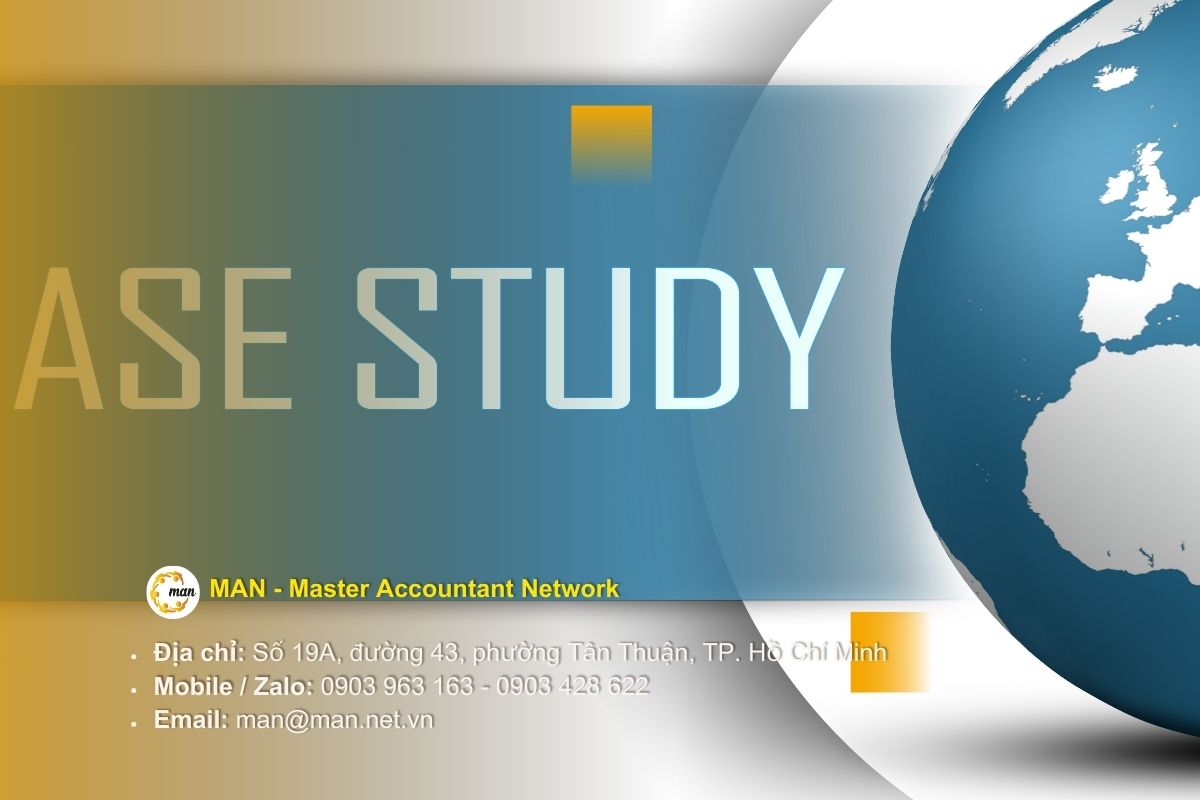
Board: Types of transfer pricing errors: Causes, consequences and solutions
| Related Transaction Error Group | Reason | Consequence | Warning signs | Remedies |
| Identify incorrect linkage | Missing indirect ownership, management contracts, shareholder changes not updated. | Transactions not valued on the basis of independent market prices, risk of tax imposition. | Contract lacks information, data. | Review and archive relevant documents. |
| Misapplication of the principle of independent market prices | Lack of functional-asset-risk (FAR) analysis, use of outdated data, ignoring market conditions. | Transaction prices do not follow the principle of independent market prices and are susceptible to tax adjustments. | Inappropriate comparison, lack of adjustment to make benchmark data similar | Perform FAR analysis, using data at the time of transaction and clearly explain the reasons for selecting that data. |
| Choosing the wrong valuation method | Apply one method to all, without testing feasibility. | Weak profile, unconvincing comparison. | Profits fluctuate, results are unstable. | Analyze functionality and data before choosing a valuation method, and test sensitivity to assess reliability. |
| Transfer pricing documents are missing or submitted late. | Loose storage, lack of standard samples, unclear responsibilities. | Unable to prove during inspection, will be subject to collection and fine. | Lack of contract, failure to explain methodology, and failure to retain comparative data. | Standardize document templates, store them systematically, and review them internally before submission. |
| False tax declaration and reporting. | Manual data entry, data mismatch between departments. | Easily detected errors, required explanation, punished | The figures on the report are different from the declaration, missing transaction description. | Synchronize data between ERP, accounting and tax declaration systems; regularly reconcile data and train employees. |
| Incorrect internal cost allocation | Lack of internal service contracts, arbitrary allocation methods. | Distorted corporate profits, tax adjustments. | Cost allocation is not based on benefits, profits fluctuate abnormally. | Sign contracts between companies in the group, allocate costs based on economic factors (such as number of employees, usage level) and keep full records. |
Every error in related-party transactions carries the risk of being assessed or collected by the tax authorities if not strictly controlled. Enterprises not only need to understand the legal regulations, but also need to build an internal control system, transparent and regularly updated documents. This is the key to both complying with Decree 132/2020/ND-CP and protecting reputation and long-term financial interests.
Consequences of related party transaction errors
To see more clearly the impact of each type of related party transaction error, businesses need to analyze from the formation mechanism, consequences to the direction of correction. The table below summarizes all important aspects, helping businesses have both a warning perspective and practical solutions to minimize tax and financial risks.
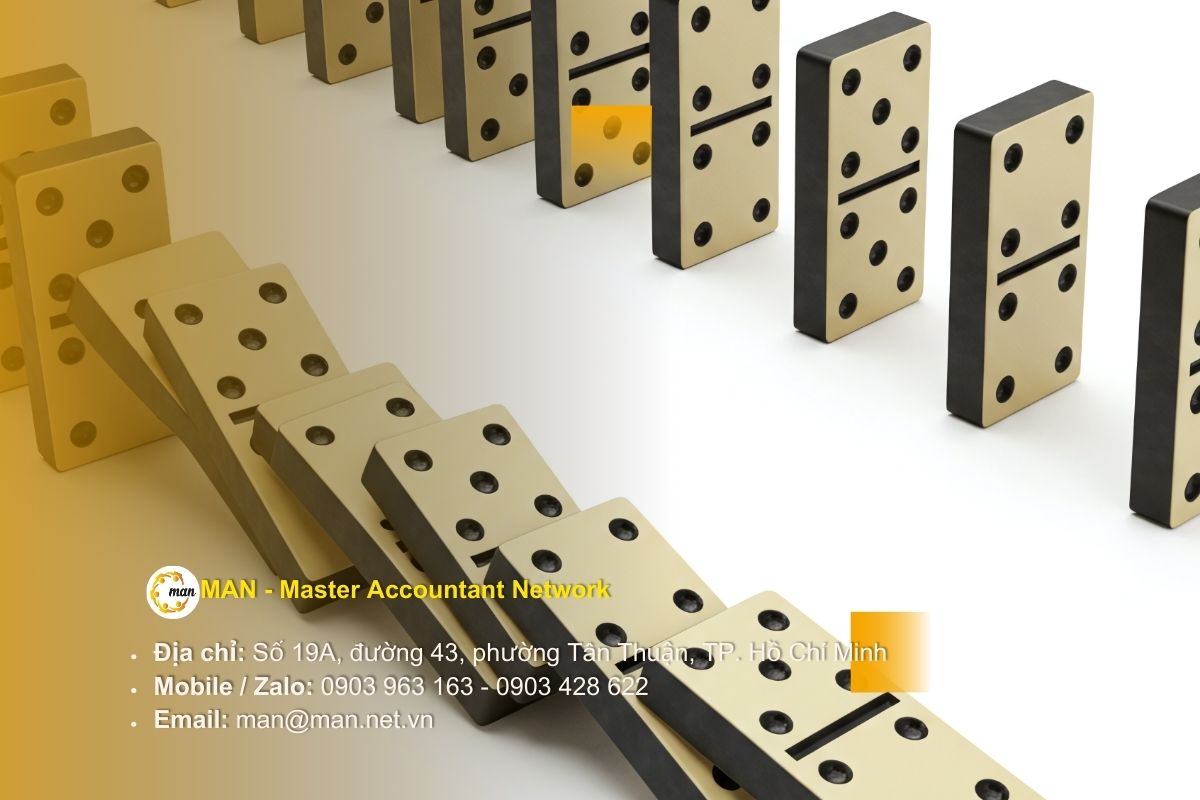
Board: Consequences and solutions when making errors in related-party transactions.
| Risk aspect | Mechanism of formation | Consequence | Measures |
| Collection, fines and late payment | Tax authorities adjust costs or transactions not according to the principle of independent market prices, leading to increased taxable income. Fine 20% on the tax arrears, plus late payment of 0.03%/day. | Immediate financial burden, cash flow impact, increased cost of capital. | Prepare complete transfer pricing documents (Local file, Master file, benchmark); if any errors are found, self-declare additional information to reduce the penalty. |
| Reputation and relationship with tax authorities | Enterprises are assessed as having weak records and lack of transparency, increasing the frequency of inspections and making negotiations difficult. | Increased administrative costs, time consuming, reduced reputation with regulatory agencies. | Build proactive communication channels with tax authorities, prepare transparent reports, and implement internal compliance programs. |
| Cash flow, profits & investor confidence | Collection, fines and late payment reduce cash, profits; break KPIs and bank loan commitment terms. | Decreased liquidity, affecting the ability to mobilize capital, reducing investor confidence. | Establish tax risk provisions, manage liquidity (cash buffer, credit line), consider applying for APA to stabilize long-term tax obligations. |
As can be seen from the table above, just a few small related-party transaction errors are enough to cause major consequences, from tax collection costs to business reputation. Therefore, proactively identifying risks and building internal control mechanisms not only helps businesses comply with Decree 132/2020/ND-CP, but also protects cash flow, profits and investor confidence.
Conclude
Obviously, if businesses do not control closely from the beginning, errors in related-party transactions can quickly turn into tax, financial and reputational risks. The solution lies not only in handling problems when they arise, but more importantly, in building a systematic risk prevention and management process. This is the "shield" that protects businesses from tax inspections and helps optimize long-term business efficiency.
If you are looking for a partner to evaluate, control and advise on comprehensive solutions for related party transactions, MAN – Master Accountant Network is ready to support with a team of experienced experts. Please contact MAN – Master Accountant immediately for advice and support.
Contact information MAN – Master Accountant Network
- Address: No. 19A, Street 43, Tan Thuan Ward, Ho Chi Minh City
- Mobile / Zalo: 0903 963 163 – 0903 428 622
- E-mail: man@man.net.vn
Editorial Board: MAN – Master Accountant Network

